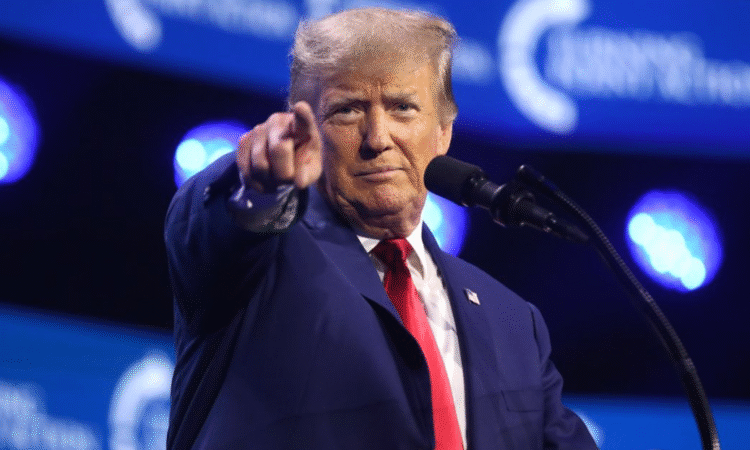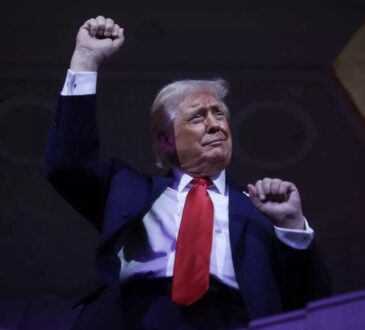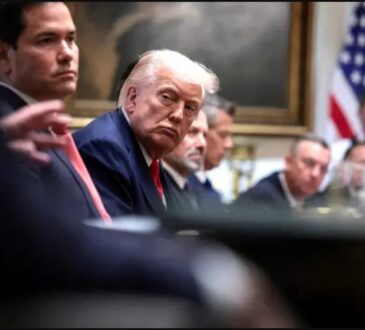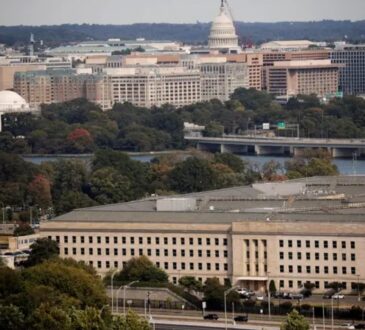
Donald Trump has once again brought national attention to the unrest in Chicago, insisting that the protests against U.S. Immigration and Customs Enforcement (ICE) have become dangerously out of hand. He has repeatedly claimed that federal officers are being threatened, property is being damaged, and that the situation poses a serious risk to public safety.
According to the President, what began as peaceful demonstrations has now turned into a movement that endangers the lives of law enforcement officers. Despite strong criticism, Trump continues to maintain that the federal government must intervene to restore order in the city.
However, many officials and observers disagree with his assessment. They say that the protests, while intense and emotional, remain largely peaceful. They accuse Trump of inflating the severity of the situation to justify the use of military force.
The Supreme Court has already blocked his earlier attempt to deploy the National Guard to Chicago, arguing that such action would violate the limits of presidential authority. Yet, Trump has refused to back down. On Friday, he returned to the legal arena, filing an emergency appeal to the Supreme Court after two lower courts had already rejected his request.
In his appeal, Trump claimed that Judge April Perry’s ruling unfairly stripped him of his constitutional power to protect federal workers and government buildings. He argued that her decision weakened the federal response and allowed the protests to grow more dangerous.
Trump’s filing included dramatic descriptions of the chaos, insisting that “federal agents’ efforts are met with prolonged, coordinated, violent resistance that threatens their lives and safety and systematically interferes with their ability to enforce federal law.” To him, this was no longer a matter of local policing it was a national crisis that demanded federal intervention.
But many legal experts and civil rights advocates say the President is overstating the problem. They point out that video evidence and reports from local authorities show that most demonstrators are peaceful and are simply expressing their political views.
The White House, meanwhile, has faced additional backlash for allegedly using misleading footage clips of violent incidents from other states—and presenting them as if they took place in Chicago. This has led to accusations that the administration is attempting to manipulate public perception and build support for deploying the National Guard.
Judge April Perry, in her ruling, directly challenged Trump’s characterization of the protests. She said that the federal government’s portrayal blurred the line between lawful protest and criminal activity. According to her, the right to protest is a fundamental part of democracy, and equating it with rebellion is a dangerous distortion.
She emphasized that the President must distinguish between citizens who peacefully criticize the government and those who commit acts of violence. Suppressing protest under the pretext of maintaining order, she argued, would be a violation of constitutional rights.
The 7th Circuit Court of Appeals also dismissed Trump’s arguments, adding that demonstrations—even those demanding large-scale government reforms do not automatically qualify as insurrections. Their statement was clear: “A protest does not become a rebellion merely because the protestors advocate for numerous legal or policy changes, are organized, call for significant alterations to the structure of the U.S. government, engage in civil disobedience, or exercise their legal right to carry firearms.” In other words, citizens still have the right to dissent, even if their opinions challenge those in power.
Despite these rulings, Trump has not given up. He has cited an old Supreme Court case from 1827, Martin v. Mott, to argue that a president has the right to call up the National Guard without judicial interference. The case, which dates back nearly two centuries, gave the president broad authority to determine when military deployment is necessary for national defense. Trump’s legal team is using that precedent to claim that courts have no jurisdiction to question or block his decision to send troops into Chicago.
Critics, however, strongly disagree with his interpretation of the law. They argue that the Martin v. Mott ruling was made in a completely different context—during a time when the nation faced external threats, not domestic political protests. Legal scholars and civil rights groups say that applying that same principle to modern-day protesters would be unconstitutional and dangerous. They warn that it could open the door for future presidents to use military force against citizens simply because they disagree with government policies.
Many Americans are divided on the issue. Trump’s supporters say he is doing what’s necessary to keep law and order, claiming that the government has a duty to protect federal property and employees from violent mobs. His critics, however, believe that his approach undermines democracy and disrespects the right to free speech. They see his actions as politically motivated, designed to portray himself as a strong leader ahead of the next election, rather than a genuine attempt to solve the problem.
For now, the Supreme Court has not yet issued a final decision on Trump’s emergency appeal. As the legal battle continues, the protests in Chicago remain a symbol of the broader national divide over freedom, power, and government control. To some, this is a test of how far a president can go in using his authority. To others, it’s a fight to protect the basic rights that define what it means to be American.




